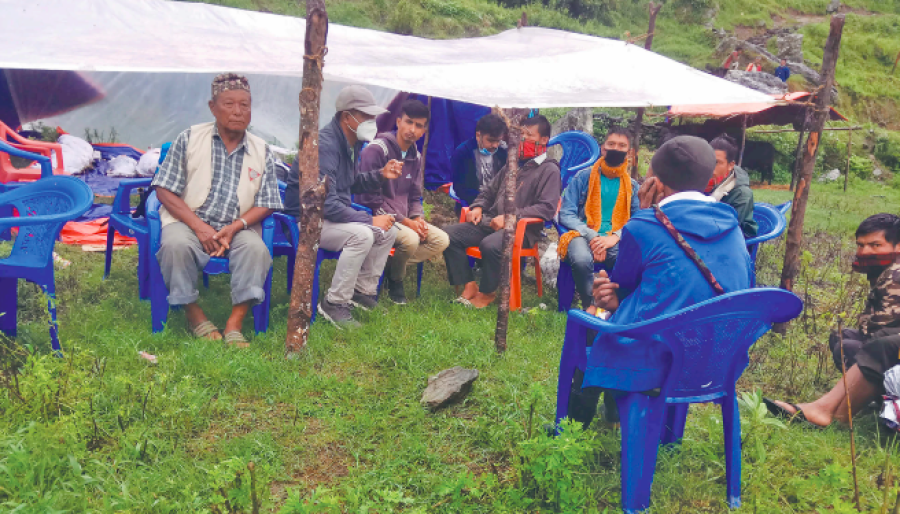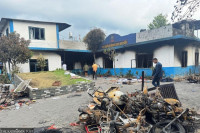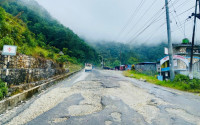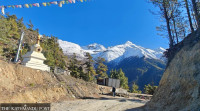Gandaki Province
Buried roads and bad weather affect relief efforts for Myagdi landslide survivors
The first instalments of relief materials have been used up in the temporary shelters while bad weather restricts flight.
Ghanshyam Khadka
Four days since Thursday night’s landslides in Myagdi, security personnel and rescuers are still facing difficulties in supplying relief material to the survivors of the disaster in Dhaulagiri and Malika rural municipalities, the most affected local units.
All the roads and horse-ways leading to the disaster sites are blocked by debris, and relief operations have been affected by bad weather.
As many as 750 people have been displaced by the landslides that claimed 28 lives in the district and swept away 50 houses. Four people are still missing.
The first lot of relief material that included 50 sacks of rice, two sacks of lentil grains, 20 cartons of oil, noodles, biscuits and other essential goods have been used up, according to Gyannath Dhakal, chief district officer of Myagdi.
“The plan to supply relief material via helicopter was unsuccessful on Monday due to bad weather conditions,” Dhakal said.
The affected villages of Marang, Kalleni, Ramche, and Bim lie about 40km from the district headquarters of Beni.
A team of security personnel from local police posts and rescuers from Beni had reached the disaster sites on Friday afternoon. The team had moved the survivors to temporary shelters but with the first instalment of relief goods fast depleting, a food crisis looms large.
The situation is tragic in the shelters, said Chakra Bahadur Pun, chair of the local Pragati Youth Club. “Many people have lost at least a member of their family. They are carrying out funeral rites with help from each other. Some visit their previous homesteads during the day to feed their cattle and return to the shelter after dusk. Those who lost all their family members stay at the shelter all day long, subdued.”
Four days since the landslides, the local units are yet to supply detailed information about the toll of the disaster, including estimates of financial loss. A team from the district crisis management committee has returned after rescuing survivors and relocating them. The committee has said that the onus is now on the local governments to rehabilitate the survivors.
Resham Jugjali, chair of Malika ward number 7, said that the rural municipality has started collecting statistics on the disaster from Monday.
“We are collecting more information which we will release soon,” he said. “If the relief doesn’t arrive, we will share what we have. But the more worrying question is how to reestablish the survivors and how to make up for the loss of personal and public properties.”
Thursday night’s landslides have destroyed roads, drinking water pipes and tanks, and the ward office buildings in Marang, Bim and Takam villages. As of now, the survivors are making do with rainwater, according to Jugjali.
CDO Dhakal said the main priority at the moment should be on supplying relief material and repairing the roads.
“If we can bring roads back in shape, then supplying relief material and rebuilding would be easier,” he said. “We are prioritising that as a step forward to rehabilitate the survivors.”
Landslides triggered by torrential rains over the weekend have claimed 45 lives across Gandaki Province. Over 1,500 people have been displaced by landslides in districts such as Myagdi, Lamjung, Tanahun and Kaski, according to Senior Superintendent Kiran Rana of Province Police. As many as 289 people have been displaced in Kaski, 167 in Lamjung, 54 in Syangja and 150 in Tanahun. Major roads in the Siddhartha Highway and the Beni-Jomsom stretch have also been obstructed.
(Pratikshya Kafle contributed reporting from Kaski.)




 9.12°C Kathmandu
9.12°C Kathmandu.jpg)










